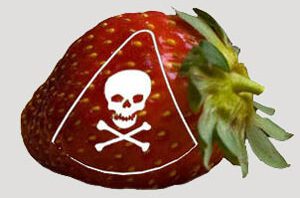Twelve years passed. And without prior notice, federal and state pesticide regulators announced a surprise settlement last month, acknowledging that, compared to their white peers, Latino schoolchildren had been disproportionately impacted by use of pesticide fumigants. While the case marks a step towards recognizing environmental injustice, it fell short of providing compensation for children, many of whom have since graduated from high school, or of protecting future generations from pesticide drift.
"The settlement for this violation of their civil rights doesn't provide any substantive relief for parents and for the children named in the complaint or for the generation of Latino school children still bearing the burden of the violation," said Brent Newell, an attorney with the Center on Race, Poverty and the Environment who filed the original suit.
In the settlement, the California Department of Pesticide Regulation (CDPR), which receives federal dollars to carry out its programs, was shown to permit more applications of pesticide fumigants near predominantly Latino schools. The case settled in late August was only the second of a backlog of over 30 cases that are, as of yet, unresolved by the EPA’s division charged with implementing the Civil Rights Act. Environmental justice advocates raise several concerns about the case including the lack of inclusion of victims in the settlement, or “back room deals” negotiated between federal and state regulators. CDPR has agreed to install air quality monitors at schools on a few campuses across California, while school officials hope that in the future they will have better education and a “heads up” on how to best protect children from pesticide drift.
At question in the case was the use of the pesticide fumigant methyl bromide — which is injected into the soil to kill pests before crops are planted — and is being phased out by 2015 under international treaty because it depletes the Earth's ozone layer. Methyl bromide is also a potent neurotoxin. Like other pesticide fumigants, it can become airborne after it is applied to the soil and can drift significant distances from fields, including to neighboring schools. Pesticide manufacturer Arysta LifeScience is actively marketing cancer-causing fumigant methyl iodide as the replacement for methyl bromide: this potential replacement product is consdered more toxic than its predecessor.
Schoolchildren remain on the front lines
As the fumigant methyl bromide is phased out, school children remain vulnerable to pesticide use. Over half the schools in California’s rural Tulare County, for example, are located within one-half mile of a field. And children in low-income, rural and communities of color remain disproportionately impacted by fumigant pesticides in California. In a March 2011 report authored by PAN, on behalf of over environmental health and justice organizations, we found that:
… counties, townships, cities and regions where methyl iodide is used (or, in the case of California, will be used) are over-represented by people of color and minority communities, compared to the general population of these locales. Our research shows that these communities tend to have below-average levels of income and educational attainment, and above-average levels of poverty.
Perhaps if the state of California had been compelled to face and make whole the victims of years of bad policy and toxic exposures, the CDPR might have been slower to let methyl iodide loose along these same frontlines.







